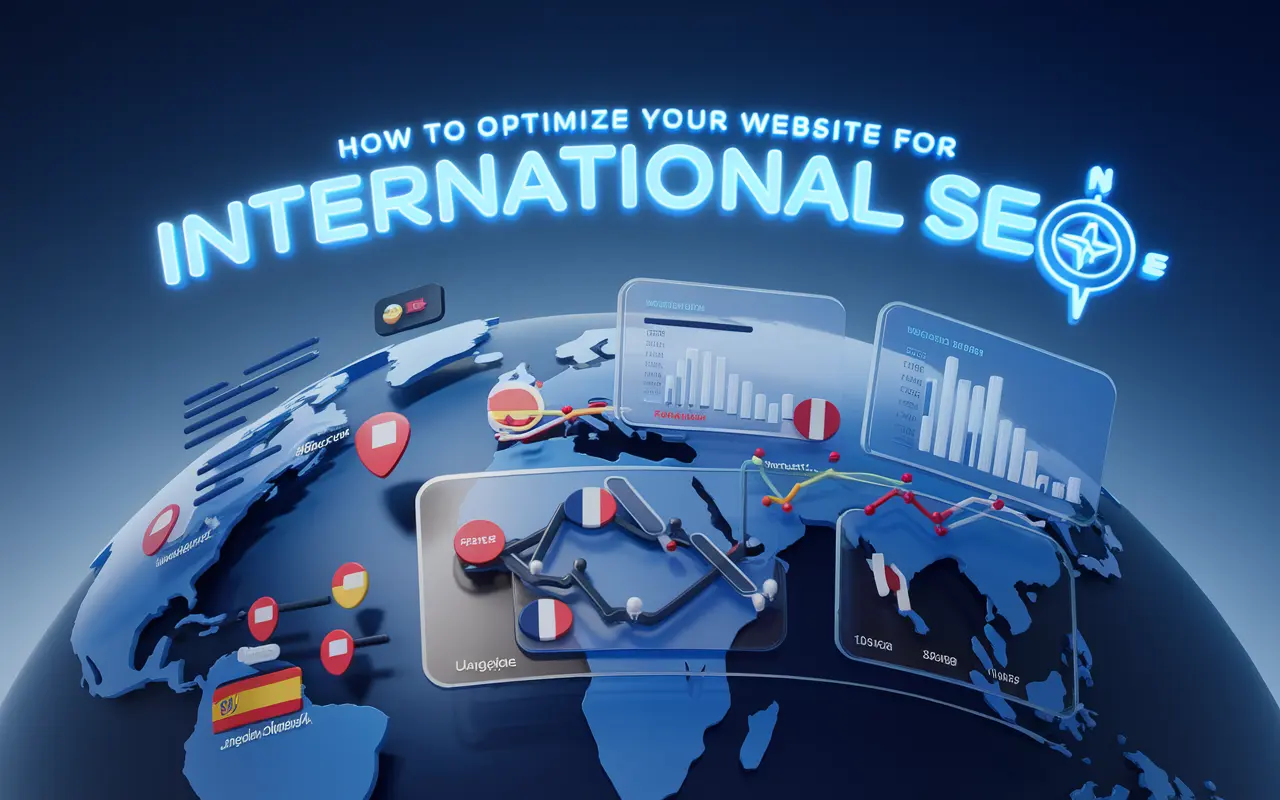Understanding International SEO Optimization for Global Visibility
International SEO refers to the strategic process of optimizing your website so that search engines can easily identify which countries you want to target and what languages you support. This process utilizes geo-targeting, hreflang tags, content localization, and structural tweaks to improve visibility across different international markets.
As global commerce becomes increasingly digital, businesses must adapt their websites to effectively reach and serve diverse international audiences. Without international SEO, even premium content may fail to appear in the search results of overseas target markets, limiting reach, user engagement, and conversions.
Whether you’re a SaaS brand expanding into Europe or an eCommerce site going global, developing a rigorous international SEO strategy ensures you’re discoverable in local search results, driving relevant international traffic and improving ROI.
Key Takeaway
International SEO ensures your website reaches global audiences by aligning with local languages, search behaviors, and search engine expectations, increasing visibility and conversions across borders.
Why International SEO Strategy Matters in Today’s Digital Landscape
Expanding into international markets without an international SEO plan is like launching a product with the wrong manual—it confuses your audience and sinks your ROI.
Integrating international SEO into your SEO strategy helps:
- Attract localized traffic that converts.
- Improve regional search visibility and ranking.
- Deliver better user experiences through language and cultural relevance.
- Align your digital presence with international buying trends and seasonality.
- Build brand authority in new global markets.
Proven Best Practices for International SEO Success
- Use Hreflang Tags Correctly: Add hreflang tags to signal to Google the language and region your content targets (e.g., “en-us” for U.S. English, “en-gb” for UK English).
- Create Country/Lang-Specific URLs: Use either ccTLDs (example.fr), subdomains (fr.example.com), or subdirectories (example.com/fr) to clearly differentiate content for each market.
- Localize Content, Not Just Translate: Adopt local idioms, currencies, imagery, product examples, and date formats to resonate with the regional audience.
- Perform Regional Keyword Research: Use tools like SEMrush, Ahrefs, or Google Keyword Planner to identify frequently searched local terms in different languages.
- Host Locally (if feasible): Local hosting can improve page speed and user trust by reducing latency in that region.
- Leverage Local Backlinks: Boost domain authority by obtaining backlinks from reputable local media, directories, or influencers.
How International SEO Optimization Works
International SEO works by tailoring technical and content strategies to meet the expectations of global search engines and regional users.
Geo-Targeting with Google Search Console
Webmasters can set geographic targeting within Google Search Console to signal the preferred country. This is especially useful when using generalized domains like .com or .net.
Dynamic Serving
Websites can serve content dynamically based on IP address or browser language using server-side configurations. However, dynamic methods can result in indexing issues if not properly implemented with Vary headers.
Language Targeting Using Hreflang Tags
Search engines like Google and Yandex rely heavily on hreflang attributes to understand which version of a webpage suits a specific language or regional preference. These help avoid duplicate content penalties.
| URL Structure | Target Audience | SEO Impact |
|---|---|---|
| example.de | Germany | Strong localization and trust signals for regional traffic |
| de.example.com | German speakers globally | Easier management, good for language targeting |
| example.com/de/ | Combined targeting via folder structure | Better for consolidated domain authority |
Case Study: Increasing International Traffic by 240% in 6 Months
Problem: Lack of International Visibility for a SaaS Company
A U.S.-based SaaS provider expanded into Latin America but saw almost no organic traffic from those regions. Their site lacked multilingual support and location differentiation.
Solution: Implementing International SEO Fundamentals
The team built out Spanish-language versions of popular product pages in a subdirectory (example.com/es/), added hreflang annotations, and secured backlinks from local tech communities.
Result: Traffic, Engagement, & Conversions Soared
Within 6 months, Latin America traffic rose by 240%, the bounce rate fell by 35%, and conversions from Spanish-speaking countries increased by 150%.
Common International SEO Mistakes to Avoid
- Using Only Google Translate: Automated translations often result in poor readability and missed cultural nuances.
- Lack of Hreflang Implementation: Ignoring hreflang tags can lead to duplicate content issues and poor ranking.
- Forgetting Local Search Engines: In regions like China or Russia, optimizing only for Google may be ineffective. Consider Baidu or Yandex.
- Identical Content Across Regions: Failing to localize can confuse users and reduce trust.
Related Terms to Explore More on Global SEO
SEO Localization: Focuses on adjusting content to match the local language and cultural context.
Hreflang Tags: HTML attributes used to signal the language and regional targeting of a webpage.
Technical SEO: Covers the backend optimizations like site speed, mobile usability, and crawlability.
FAQs About Optimizing Websites for International SEO
Translation converts text from one language to another, while localization adapts the content culturally, linguistically, and regionally for maximum relevance.
No, while ccTLDs help, using subdirectories or subdomains with proper hreflang tagging can be equally effective and easier to manage.
Yes, localized versions of your site can improve visibility in regional search results, strengthening both international and local SEO efforts.
Popular tools include SEMrush, Ahrefs, Google Search Console (for geo-targeting), and Screaming Frog for hreflang audits.
Conclusion: Expand Your Reach with a Smart International SEO Gameplan
International SEO is no longer optional for brands seeking scale. A smart strategy aligns with regional behaviors, builds local trust, and increases search visibility across borders. By implementing hreflang tags, content localization, and country-specific URL structures, businesses can efficiently meet user intent and scale organically in global markets. Start small, test strategies regionally, and expand based on data-driven insights.
For a deeper dive into implementing international SEO and boosting your global rankings, visit our SEO services page.






